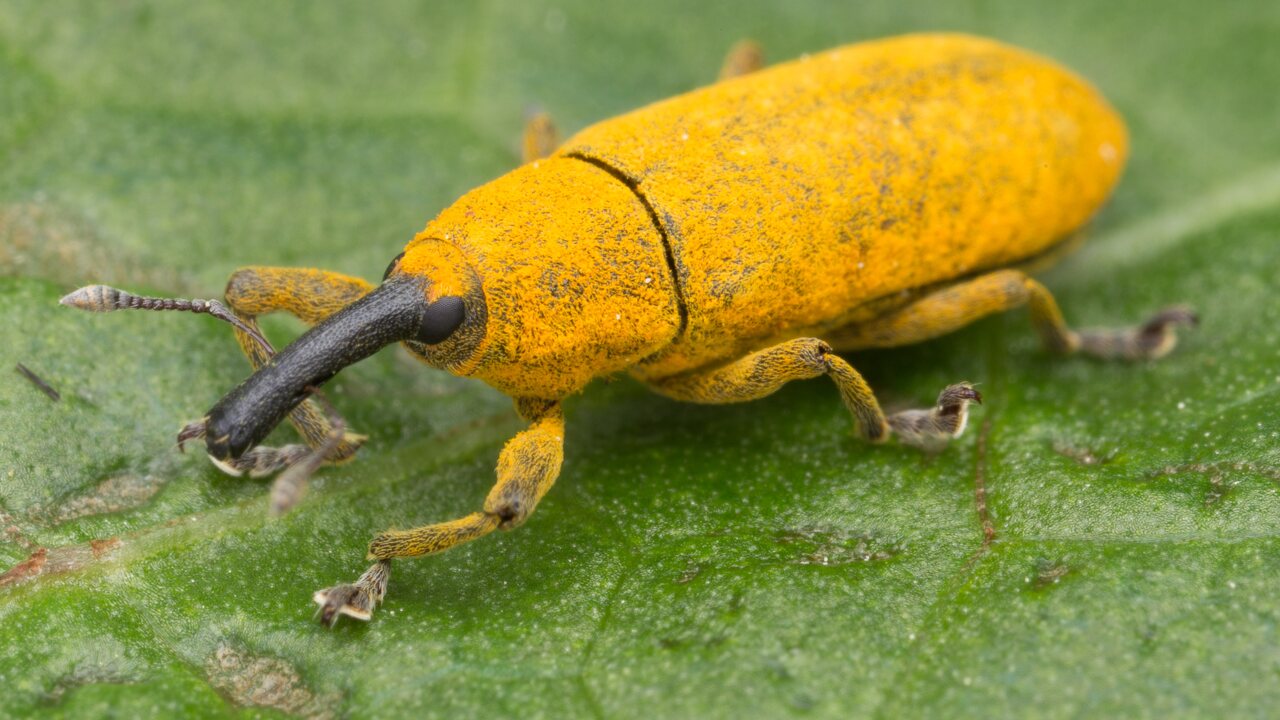
Lixus bardanae · rūgštyninis stiebastraublis
- Wasserampfer-Stängelrüssler
- rūgštyninis stiebastraublis
- bruine zuringsnuitkever
- kulczanka szczawiowa, kulczanka szczawiowiec
- skräppevivel
Black body, rusty dusted. Snout and pronotum densely punctate. Pronotum tapering anteriorly, slightly wider than the base of elytra. Ends of elytra rounded. Antennae generally brown. Similar Lixus iridis differs in the sharp ends of the elytra.
Oviposition in the petiole of a low leaf or in the stem; the opening is closed with a wad of chewed plant material, that later turns dark red. The larvae bore tunnels, descending into the stem. Ultimately they also pupate here, in a frass-lined pupal chamber. One petiole or internode may harbour up to a dozen larvae. Host plants: Rumex acetosa, aquaticus, crispus, hydrolapathum, patientia. Distribution: West Palaearctic.
‥